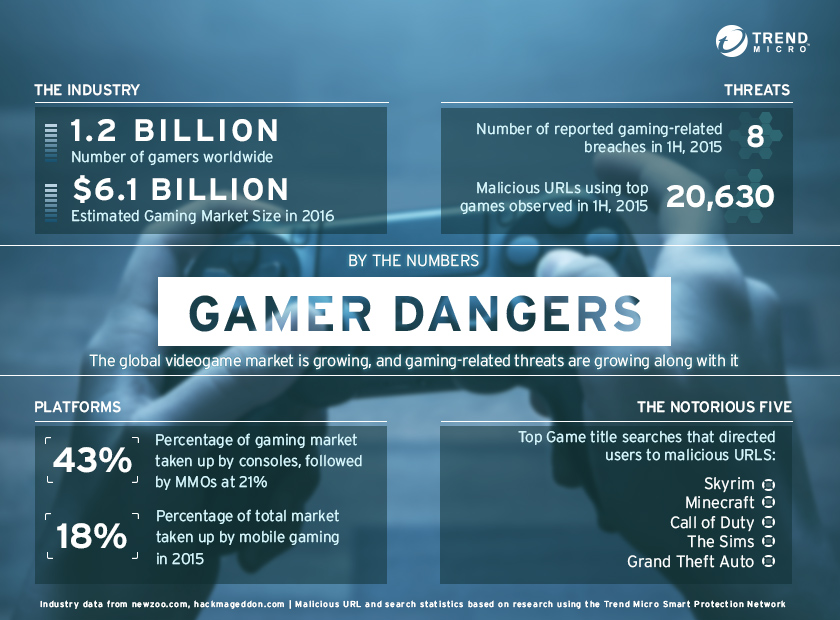The gaming industry has experienced rapid growth and evolution in recent years, with millions of players engaging in online gaming platforms and communities. However, this surge in popularity has also attracted the attention of cybercriminals who seek to exploit vulnerabilities and launch attacks. As a result, understanding the cybersecurity threats in the gaming industry is crucial for gamers, game developers, and industry professionals alike. This article by Newsmartz aims to provide a comprehensive analysis of the various cybersecurity threats that plague the gaming industry, shedding light on the risks involved and the necessary measures to mitigate them.
Cybersecurity Threats in the Gaming Industry: Understanding the Risks
As the Cybersecurity threats in the gaming industry continues to flourish, the risks posed by cybersecurity threats become increasingly significant. Understanding these threats and implementing robust security measures are crucial for gamers, game developers, and industry stakeholders. By staying vigilant, adopting best practices, and fostering collaboration, the Cybersecurity threats in the gaming industry can mitigate cybersecurity risks and provide a safe and enjoyable gaming experience for players worldwide.
- Overview of the Gaming Industry:
a. Growth and Reach: The gaming industry has become a global phenomenon, reaching a vast audience across different platforms and demographics. The increasing adoption of online gaming has created a thriving ecosystem that spans consoles, PCs, mobile devices, and virtual reality.
b. Online Gaming Communities: Online gaming encourages player interaction and engagement through multiplayer modes, chat features, and social networking. These communities provide cybercriminals with opportunities to exploit vulnerabilities and target unsuspecting individuals.
- Common Cybersecurity Threats in the Gaming Industry:
a. Account Takeovers: Cybercriminals often target gaming accounts to gain unauthorized access, steal personal information, or sell virtual assets. Weak passwords, phishing attacks, and malware-infected downloads are common methods employed by hackers.
b. DDoS Attacks: Distributed Denial of Service (DDoS) attacks disrupt gaming services by overwhelming servers with a flood of traffic. These attacks can cause severe downtime, impacting the gaming experience for players and affecting the reputation and financial stability of gaming companies.
c. Cheating and Hacking: Cheat software, aimbots, and wallhacks enable players to gain unfair advantages, such as enhanced abilities or access to hidden information. These exploits compromise the integrity of online gameplay and frustrate legitimate players.
d. Malware and Ransomware: Cybercriminals distribute malicious software disguised as Cybersecurity threats in the gaming industry game mods, cheats, or game updates. Once installed, these malware programs can steal personal information, encrypt files for ransom, or turn gaming devices into botnets for further attacks.
e. Phishing and Social Engineering: Phishing emails, fake websites, and social engineering techniques trick gamers into revealing sensitive information, such as login credentials or credit card details. These tactics rely on exploiting trust and familiarity within the gaming community.
- The Impacts of Cybersecurity Threats:
a. Financial Losses: Cybersecurity breaches can Cybersecurity threats in the gaming industry result in financial losses for gamers, game developers, and publishers. Stolen credit card information, unauthorized transactions, and the loss of virtual assets can have significant financial repercussions.
b. Reputation Damage: Gaming companies that fail to Cybersecurity threats in the gaming industry cybersecurity threats risk damaging their reputation. News of security breaches, cheating scandals, or compromised player data can erode trust and lead to a loss of player base and revenue.
c. Player Disruption: Cybersecurity threats disrupt the gaming experience for players. DDoS attacks, cheaters, and hacked accounts diminish the enjoyment of online gaming, leading to frustration, player abandonment, and diminished community engagement.
- Preventative Measures and Best Practices:
a. Strong Passwords and Two-Factor Authentication: Implementing Cybersecurity threats in the gaming industry passwords and enabling two-factor authentication adds an extra layer of security to gaming accounts, making them harder to compromise.
b. Regular Software Updates: Keeping gaming systems, consoles, and applications up to date with the latest security patches helps protect against known vulnerabilities and exploits.
c. Anti-Malware and Firewalls: Installing reputable anti-malware software and enabling firewalls provide essential protection against malware, phishing attempts, and other malicious activities.
d. Education and Awareness: Gamers should be educated about cybersecurity threats and taught to recognize and avoid common scams, suspicious links, and phishing attempts.
e. Developer Responsibility: Game developers and publishers have a responsibility to prioritize cybersecurity measures during the development and maintenance of gaming platforms. This includes conducting regular security audits, encrypting sensitive data, and promptly addressing vulnerabilities.
- Collaboration and Industry Efforts:
a. Sharing Threat Intelligence: Collaboration between gaming companies, cybersecurity firms, and law enforcement agencies can help identify emerging threats, share best practices, and develop proactive solutions.
b. Responsible Disclosure: Establishing channels for responsible disclosure encourages ethical hackers to report vulnerabilities to gaming companies, enabling timely patches and reducing the risk of exploitation.
c. Industry Standards and Regulations: The gaming industry should work towards establishing cybersecurity standards and regulations to ensure a baseline level of security across all gaming platforms.
Conclusion
As the Cybersecurity threats in the gaming industry continues to flourish, the risks posed by cybersecurity threats become increasingly significant. Understanding these threats and implementing robust security measures are crucial for gamers, game developers, and industry stakeholders. By staying vigilant, adopting best practices, and fostering collaboration, the Cybersecurity threats in the gaming industry can mitigate cybersecurity risks and provide a safe and enjoyable gaming experience for players worldwide.



